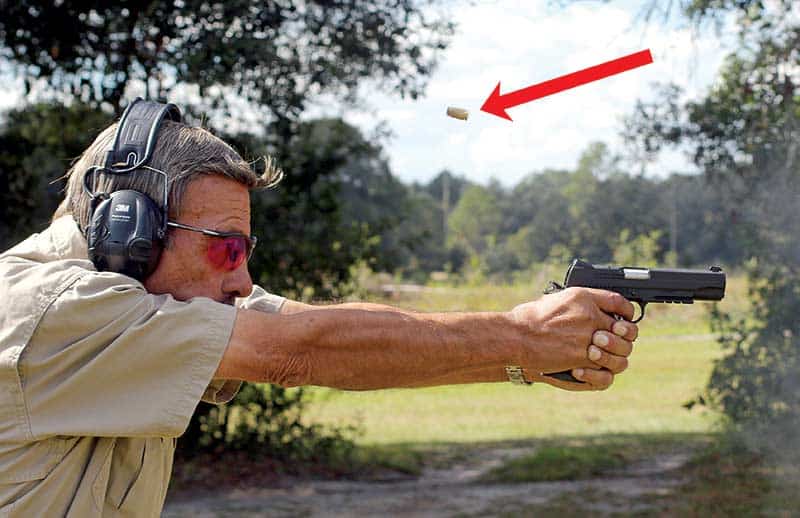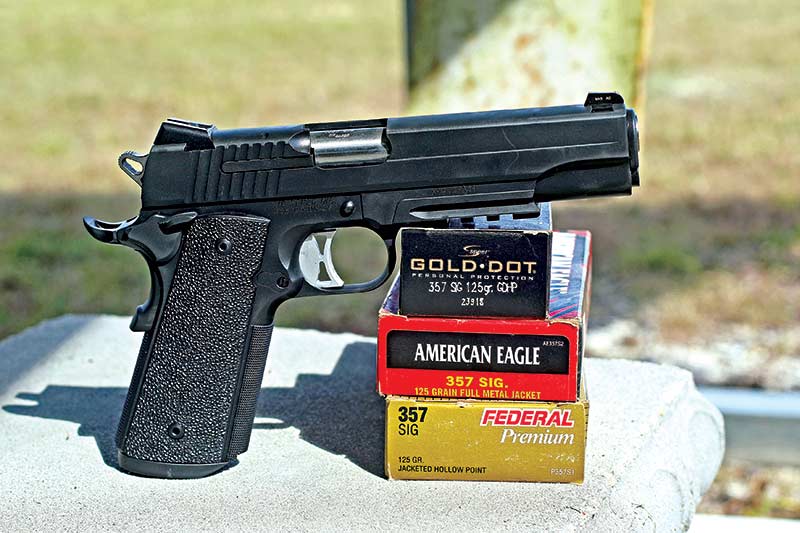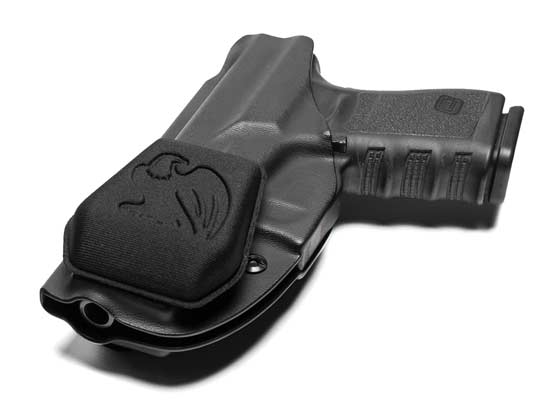1911+ .357 = SIG TACOPS
More cops are carrying the 1911 pistol today than at any time in history. “Shootability” due to good ergonomics and trigger pull, a short reach to the trigger favoring smaller hands and mandatory on-safe carry giving the officer one more “buffer” against being killed with his own gun if disarmed, are the reasons why.
For almost a quarter century the .357 SIG cartridge has achieved, in the field, what Federal Cartridge and Ted Rowe, then at SIG, conceptualized for it: the “stopping power” of the 125-gr. .357 Magnum revolver round in a platform with less recoil and muzzle flash, more rounds on board and superior penetration.
Both concepts meet in a factory pistol, the SIG 1911 TACOPS, newly chambered for .357 SIG. The pistol comes with three 8-round, single-stack magazines, fixed night sights and the mandatory for today’s police sales, a rail for lights and lasers.
Our test TACOPS’ trigger pull averaged five pounds, 2.24 ounces on a Lyman digital trigger pull gauge from Brownell’s. This is well within the recommended range of “duty trigger pull weight” for 1911 service pistols from the liability perspective, yet still allows good shooting in both high speed and precision scenarios. Its ambidextrous thumb safety was perfectly adjusted out of the box.
Accuracy
All testing was done with 125-gr. ammo, the raison d’etre of the .357 SIG cartridge. American Eagle FMJ training ammo put five shots into 2.75″, the best three in less than half of that at 1.25″. The original duty load from the early 1990’s, Federal Premium JHP, delivered 2.40″ for all five, and an amazing 0.35″ for the best three — a single .357 SIG bullet in the center of that group would have cut all three previous holes. Speer’s Gold Dot, the most street-proven of .357 SIG ammo from Richmond PD and Virginia State Police to the Texas Department of Public Safety, went 2.35″ for all five shots and 1.95″ for the best three. All shooting was from a Matrix rest on a concrete bench at 25 yards.
The pistol shot to the right and high, out of the box. Had it been our own, we would have simply drifted the rear night sight in its dovetail and called it good with a six o’clock hold.
I took a railed 5″ 1911 the same weight as this one, by another maker, out of the gun safe and compared the recoil of Federal +P 230-gr. HST and standard pressure 230-gr. Winchester Ranger-T .45 ACP to the Federal 125-gr. .357 SIG out of the TACOPS 1911. I had expected more snap with the higher velocity round, but was pleasantly surprised to find the 1911 SIG .357 kicked a tad less than either .45 duty load.
Special Needs
Why did it take so long to make a .357 SIG in 1911 format? Several reasons. The .357 SIG is essentially cloned from the .40 S&W, both with shorter overall cartridge lengths than the 1911 pistol was designed for. Both the .40 and the .357 SIG were designed to create a “middle ground” between the higher-capacity 9mm and the lower-capacity .45 ACP at a time when the auto pistol was still fairly new to American police. If a .357 SIG cartridge is chosen for capacity, the individual officer or the issuing agency wants to turn a page in the SIG catalog and go to the P226 with a 12-round mag, holding half again more than the 1911 .357 SIG. The 1911 format is great for smaller hands, and many consider its on-safe carry a feature, not a bug. And frankly, some people simply shoot a 1911 better than anything else.
Our 3-person test team, including a petite female, put several hundred rounds through this pistol with no malfunctions, and we all liked it. The only beef was it hadn’t been sighted-in at the factory, which one kind of expects of a pistol with an MSRP of $1,233. The first .357 SIG 1911 I ever shot, back in 2007, was a Jarvis Custom Kimber built for my friend Steve Sager. Steve loved that gun but finally gave up on it after a series of broken slide stops, some with as little as 200 rounds. SIG has apparently solved that problem with their .357 1911, because I know how intensive their in-house research is before they release new models out into the wild.
If your department gives you the flexibility to choose — and if you want the street-proven ballistics of the .357 SIG with the ergonomics and features of the 1911 platform — SIG now offers the pistol which fits that specific niche.





